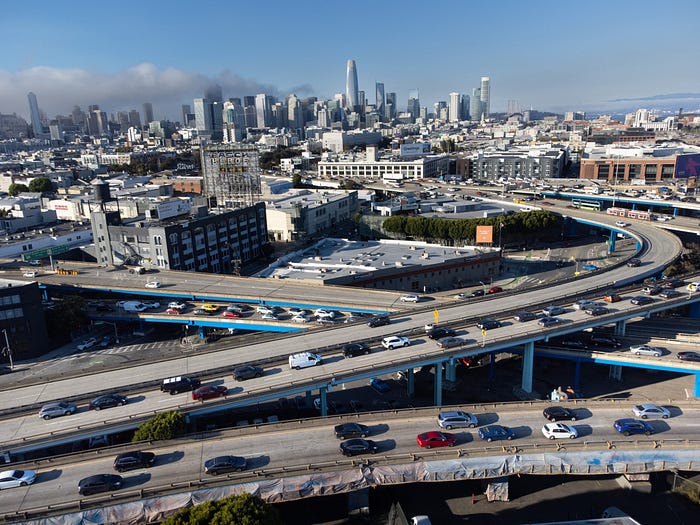
December 12, 2022
Director Rich Hillis
San Francisco Planning Department
49 South Van Ness, Suite 1400
San Francisco, CA. 94103
RE: The Central Freeway
Director Hillis, Department Heads and Elected Representatives,
The American Indian, Mission and SOMA communities were alarmed to learn recently that discussions and events regarding the potential removal of the Central Freeway are happening without the inclusion of the indigenous communities and communities of color stakeholders that have for generations lived near and around the Central Freeway. History has shown that marginalized low-income BIPOC communities are the most vulnerable in major planning changes to our neighborhoods and tend to be left out of the decision-making process — and this is so far what is happening yet again.
Recent articles in the media and group discussions with architects and organizations like SPUR and others are exclusive of our BIPOC communities. These discussions should instead be centered on race and equity and led by those who would be most impacted.
History has shown us that the removal of the west part of the central freeway led to the displacement of African American residents and African American-owned businesses, completely erasing the once diverse Hayes Valley into the gentrified landscape that exists today. When the Embarcadero Freeway was removed after the Loma Prieta earthquake in 1989, Chinatown’s neighborhood economy suffered and took decades to build the Central Subway as a mitigation measure, just barely opening a few weeks ago, after decades of advocacy. These precedents create a grave concern to our communities in the Mission and SOMA, who are only now learning that these discussions have been unfolding, exclusive of our voices.
The Central Freeway runs along three cultural districts and low-income residential neighborhoods and must fully address the issues and needs of these communities before any steps are taken. Cultural Districts are city funded programs approved by the voters of San Francisco to address the impacts of gentrification and cultural displacement and affirm our communities right to exist and have a stake in our future. Each cultural district requires a CHESS report that provides strategies for culturally informed economic development and housing. The legislation of the Cultural Districts program states that community members from each District and City Departmental staff must write and then be guided by a three-year plan aimed at fulfilling each District’s vision and goals. Cultural Districts Program Information (pdf)
The San Francisco Planning Commission has acknowledged and apologized “for the history of inequitable planning processes that have resulted in racial disparities” and instructed the Planning Department to implement its Racial and Social Equity Action Plan. As such, it is critical that any conversations and planning around the potential removal of the Central Freeway must be led by the communities most affected. The local community and Cultural Districts have a keen understanding of the lived experience and what it will take to protect our cultural assets, sacred sites, history and community and it is paramount that those aspects be central to any conversations impacting our communities. Making decisions for our communities — planning on us instead of with us — will continue the long history of institutional racism, cultural removal and silencing of BIPOC and marginalized communities for the benefit of others.
It is critical that we restart this conversation structurally centered in the voices of the BIPOC community members. The discussions, direction and decisions about the Central Freeway must come from our communities that will be most affected.
Sincerely,
American Indian Cultural District
Leather and LGBT Cultural District
SOMA Pilipinas Cultural District
Calle 24 Latino Cultural District
United to Save the Mission (15 orgs)
San Francisco Latinx Democratic Club
San Francisco Latino Task Force
Mission Cultural Center
Mission Economic Development Agency
Mission Neighborhood Centers
Mission Neighborhood Health Center
Instituto Familiar de la Raza
La Raza Community Resource Center
Dolores Street Community Services
Our Mission No Eviction
Race and Equity in all Planning Coalition (38 orgs)
Good Samaritan Family Resource Center
San Francisco Lowrider Council
Precita Eyes
Hispanic Chamber of Commerce, San Francisco
Nicaraguan American Chamber of Commerce
Bay Area Central American Chamber of Commerce
Latin American and Caribbean Business Chamber of Commerce
Guatemalan American Chamber of Commerce San Francisco
PODER
Clecha
SOMCAN-South of Market Community Action Network
Gubbio Project
People Power Media
Caminate Cultural Foundation
CARECEN SF
United Playaz
Carnaval San Francisco
CANA
Cultural Action Network
BRAVA for Women in the Arts
San Francisco Council of Community Housing Organizations (CCHO)
Westside Tenants Association
TODCO
Westside Community Coalition
Young Community Developers
Richmond District Rising
Housing Rights Committee of San Francisco
Plaza 16
San Francisco Tenants Union
Advocates for Empowerment
Save Capp Street
Clarion Alley Mural Project
Redstone Labor Temple Association
West Bay Pilipino Multi-Service Center
The Women’s Building
East Mission Improvement Association
Chinatown Community Development Center
Chinatown TRIP
CC: San Francisco Board of Supervisors
CC: San Francisco Planning Commission
CC: San Francisco County Transportation Authority
CC: San Francisco Municipal Transportation Agency Board of Directors
CC: Immigrant Rights Commission
CC: Senator Scott Wiener, CA-11
CC: Assemblymember Matt Haney, AD-17
CC: Assemblymember Phil Ting, AD-19
CC: Mayor London Breed
CC: Human Rights Commission
CC: San Francisco Equity Advisory Council
CC: Miriam Chion, Director of Community Equity, SF Planning Department
